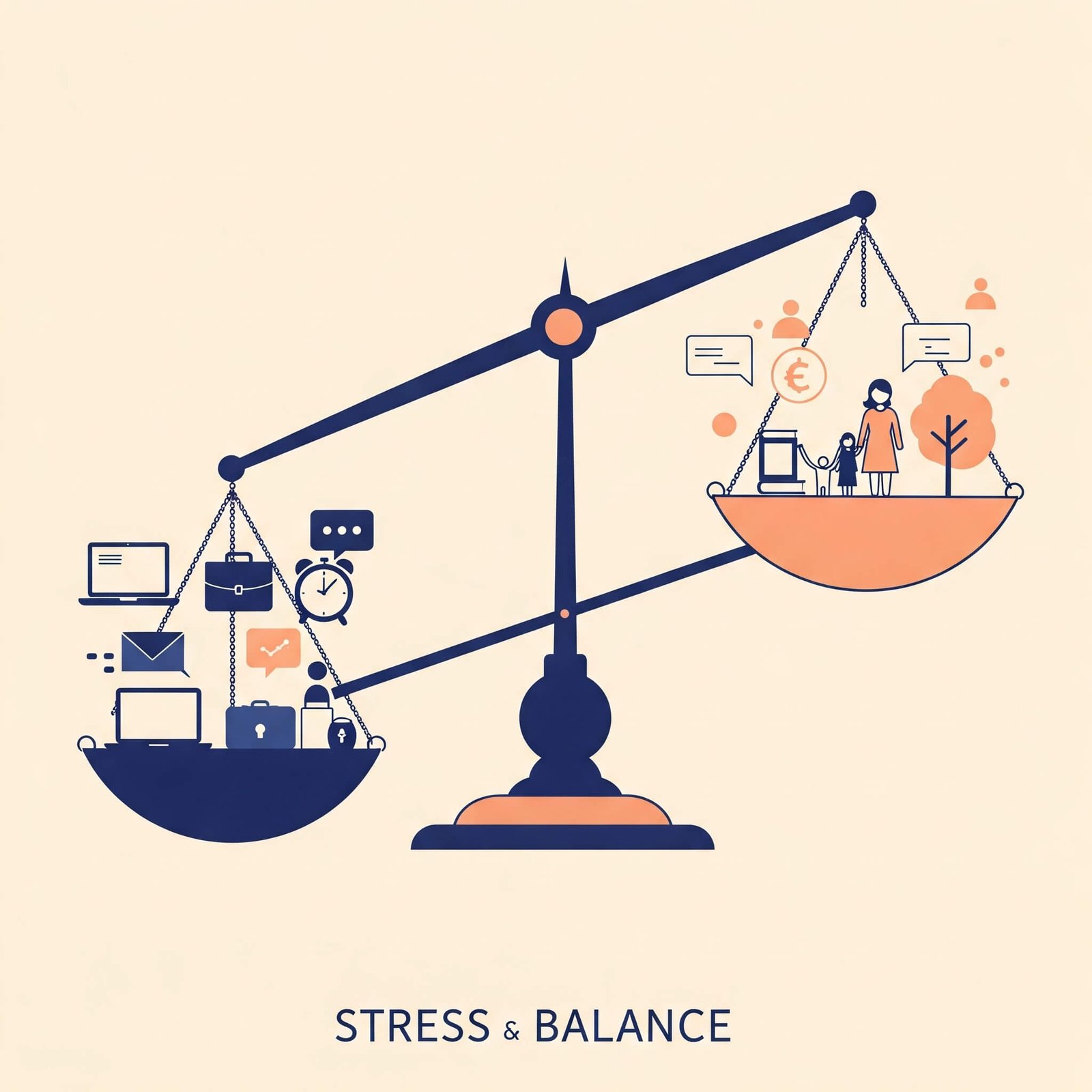In today’s fast-paced work environment, the risk of burnout looms large. Indeed, many professionals find themselves caught in a cycle of endless tasks and mounting pressure, leading to exhaustion and diminished productivity. Learning how to avoid burnout at work is crucial for maintaining both your mental health and career longevity. Therefore, this article provides actionable strategies to help you achieve a healthier, more balanced professional life. To begin with, let’s understand the impact of burnout.

H2: Understanding Burnout and Its Impact on Your Work Life
Burnout isn’t just feeling tired; rather, it’s a state of emotional, physical, and mental exhaustion caused by prolonged or excessive stress. Specifically, it manifests in various ways, including:
- Chronic fatigue
- Cynicism and detachment
- Reduced professional efficacy
- Physical symptoms like headaches and insomnia
Moreover, understanding the impact of burnout is the first step in learning how to avoid burnout at work. In essence, it’s about recognizing the signs before they escalate. Consequently, proactive measures are essential.
H2: Practical Strategies to Avoid Burnout at Work: Prioritizing Self-Care
Self-care isn’t a luxury; instead, it’s a necessity. In order to effectively avoid burnout at work, you must prioritize your well-being. For example:
- Schedule Breaks: Take regular breaks throughout the day. Even short breaks can help you recharge.
- Get Enough Sleep: Aim for 7-9 hours of quality sleep each night.
- Nourish Your Body: Eat a balanced diet and stay hydrated.
- Exercise Regularly: Physical activity reduces stress and boosts mood.
- For more information on the importance of excercise, please check out the American Heart Association: https://www.heart.org/en/healthy-living/fitness

H2: Setting Boundaries and Managing Time to Avoid Burnout
Learning to say “no” and managing your time effectively are essential to avoid burnout at work. In particular:
- Learn to Delegate: Don’t try to do everything yourself. Instead, delegate tasks when possible.
- Set Realistic Deadlines: Avoid overcommitting and set achievable deadlines.
- Time Blocking: Allocate specific blocks of time for different tasks.
- Limit Overtime: Consistently working long hours will lead to burnout.
H3: Effective Time Management Techniques
- Utilize time management tools and apps.
- Prioritize tasks based on urgency and importance.
- Furthermore, minimize distractions during focused work periods. Additionally, strive for efficiency. Above all, be realistic.
H2: Cultivating a Supportive Work Environment to Combat Burnout
A positive and supportive work environment can significantly contribute to your ability to avoid burnout at work. Notably:
- Communicate Openly: Talk to your manager or colleagues about your workload and stress levels.
- Build Positive Relationships: Foster supportive relationships with your coworkers.
- Seek Professional Help: If needed, consider seeking support from a therapist or counselor.
- For more information on mental health in the workplace, visit the National Institute of Mental Health: https://www.nimh.nih.gov/health/topics/stress-management

H2: Recognizing and Addressing Early Signs of Burnout
Identifying the early signs of burnout is crucial for timely intervention. For instance:
- Increased irritability and impatience.
- Difficulty concentrating.
- Feeling overwhelmed and helpless.
- Increased absences from work.
H3: Taking Proactive Steps to Prevent Burnout
- Implement consistent self-evaluation.
- Actively seek and respond to feedback.
- Subsequently, adjust work habits as needed. Ultimately, prevention is key. Therefore, take action early.
Conclusion
Learning how to avoid burnout at work is an ongoing process that requires commitment and self-awareness. Ultimately, by prioritizing self-care, setting boundaries, and cultivating a supportive work environment, you can maintain a healthy work-life balance and thrive in your career. Remember, your well-being is just as important as your 1 professional success. In summary, take control of your work life to prevent burnout. In conclusion, prioritize your wellbeing.



